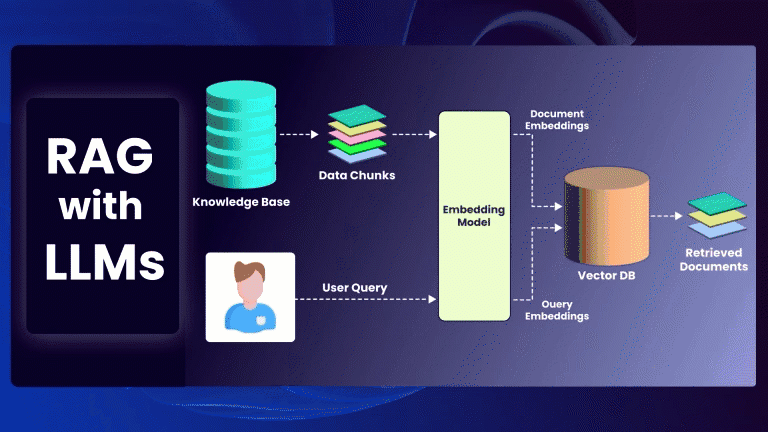Next.js, developed by Vercel, has established itself as a leading React framework for building modern web applications. Known for its powerful features like server-side rendering (SSR) and static site generation (SSG), Next.js continues to evolve, offering developers new tools and capabilities to enhance performance, scalability, and developer experience. In this blog, we will dive into the latest features of Next.js as of 2024 and provide a comprehensive guide on how to leverage them in your projects.
Introduction to Next.js
Next.js is a React-based framework that allows developers to build fast, user-friendly web applications with minimal configuration. It offers out-of-the-box solutions for common tasks such as routing, server-side rendering, and static site generation. Next.js simplifies the development process, enabling developers to focus on building features rather than configuring their environment.
Key Features of Next.js
- File-based Routing:
- Next.js uses a file-based routing system where the file structure of the
pagesdirectory determines the application routes. This intuitive approach eliminates the need for complex routing configurations.
- Server-side Rendering (SSR):
- SSR enables pages to be rendered on the server before being sent to the client, improving initial load times and SEO.
- Static Site Generation (SSG):
- SSG generates HTML at build time, allowing pages to be served as static files, which enhances performance and scalability.
- API Routes:
- Next.js supports API routes, enabling the creation of backend endpoints within the same application. This feature simplifies the development of full-stack applications.
- Automatic Code Splitting:
- Next.js automatically splits code at the page level, ensuring that only the necessary code is loaded for each page, which improves performance.
New Features in Next.js for 2024
As of 2024, Next.js has introduced several new features and improvements that further enhance its capabilities:
- Next.js App Router:
- The new App Router provides a more powerful and flexible routing system, allowing nested routing and layouts. It simplifies the creation of complex application structures.
- Server Actions:
- Server Actions allow developers to define server-side logic directly within React components. This feature reduces the need for separate API endpoints, making it easier to manage server-side operations.
- Optimized Image Component:
- The Next.js Image component has been improved to provide better performance and easier integration. It automatically optimizes images for different screen sizes and formats, ensuring faster load times.
- React Server Components:
- React Server Components allow components to be rendered on the server and streamed to the client. This results in faster load times and a more responsive user experience.
- Middleware:
- Middleware provides a way to execute code before a request is completed. This can be used for tasks such as authentication, logging, and modifying responses.
- Improved Data Fetching:
- Next.js now offers more flexible data fetching methods, including enhanced support for incremental static regeneration (ISR) and on-demand ISR. These improvements allow for more dynamic and up-to-date content.
Getting Started with Next.js
To get started with Next.js, follow these steps:
- Install Next.js:
npx create-next-app@latest my-next-app
cd my-next-app
npm run dev- Create Pages:
- Create new pages by adding files to the
pagesdirectory. Each file represents a route in your application.
- Implementing SSR and SSG:
- Use
getServerSidePropsfor server-side rendering andgetStaticPropsfor static site generation.
// pages/ssr.js
export async function getServerSideProps() {
return {
props: {
data: 'Server-side data',
},
};
}
function SSRPage({ data }) {
return <div>{data}</div>;
}
export default SSRPage; // pages/ssg.js
export async function getStaticProps() {
return {
props: {
data: 'Static data',
},
};
}
function SSGPage({ data }) {
return <div>{data}</div>;
}
export default SSGPage;- Using API Routes:
- Create API routes by adding files to the
pages/apidirectory.
// pages/api/hello.js
export default function handler(req, res) {
res.status(200).json({ message: 'Hello, World!' });
}- Optimizing Images:
- Use the Next.js Image component to optimize images.
import Image from 'next/image';
function HomePage() {
return (
<div>
<Image
src="/images/my-image.jpg"
alt="My Image"
width={500}
height={300}
/>
</div>
);
}
export default HomePage;- Using Middleware:
- Implement middleware in the
middlewaredirectory.
// middleware/auth.js
import { NextResponse } from 'next/server';
export function middleware(request) {
const { pathname } = request.nextUrl;
if (pathname.startsWith('/protected')) {
// Add your authentication logic here
return NextResponse.redirect(new URL('/login', request.url));
}
return NextResponse.next();
}- Leveraging React Server Components:
- Utilize React Server Components for enhanced performance.
// components/ServerComponent.js
export default function ServerComponent() {
return <div>This component is rendered on the server</div>;
} // pages/index.js
import dynamic from 'next/dynamic';
const ServerComponent = dynamic(() => import('../components/ServerComponent'), { ssr: true });
function HomePage() {
return (
<div>
<ServerComponent />
</div>
);
}
export default HomePage;Conclusion
Next.js continues to be a robust and versatile framework for building modern web applications. With the introduction of new features like the App Router, Server Actions, and React Server Components, Next.js is pushing the boundaries of what’s possible in web development. Whether you’re building static websites, dynamic applications, or full-stack solutions, Next.js provides the tools and flexibility to meet your needs. As we move further into 2024, mastering Next.js will undoubtedly be a valuable asset for any web developer.






